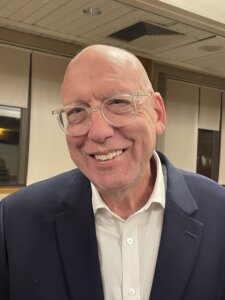Bringing Malala Into Bat Mitzvah Ceremony

Image by getty images
You would have to have a heart encrusted with cynicism to not be moved by Malala Yousafzai.
It is, in many ways, a modern miracle. An activist for equal education for young girls in her native Pakistan, Malala survived a Taliban bullet and expanded her local quest into an international movement for women’s education in Muslim countries. This past week, she became the first Pakistani and the youngest person – seventeen years old – to win the Nobel Peace Prize. She is, in fact, the most famous teenager in the world.
But the proof of a truly inspirational story is that it moves beyond its own national and cultural boundaries, and that it becomes universal. I am going to suggest that this is truly the case with Malala – and that, more than that, her story needs to become the story of young Jewish girls as well.
Take the case of bat mitzvah.
Most Jewish girls who become bat mitzvah have little sense of how revolutionary that rite of passage once was – and how, comparatively speaking, it is one of Judaism’s most modern rituals. It is, in fact, “only” 92 years old – “born” when Judith Kaplan, the daughter of Rabbi Mordecai Kaplan, was called to the Torah at the Society for the Advancement of Judaism in New York. Or, to put it in generational perspective: bat mitzvah is only slightly older than many of the grandparents of young women who are becoming bat mitzvah now.
Why was bat mitzvah revolutionary? Because it symbolized, and continues to symbolize, that Jewish women would have equal access to the Torah, that their minds and souls would no longer be locked behind the mehitzah of ignorance, and that they would be able to see their own lives reflected in the beauty of the sacred letters.
It symbolized, and continues to symbolize, the sense that Jewish men and Jewish women would have equal access to Jewish wisdom and knowledge. For, in fact, as women had already begun to make massive strives in equality in secular education, how could it have been otherwise in the world of the synagogue?
Back to Malala.
At a time when many young people, especially young girls, are desperately in need of heroes and heroines, Malala Yousafzai is the answer to our needs. She fought for her ideals, and even in her wounding, she won.
I now propose that we go one step further. For a while, it had been a custom for many American Jewish teenagers to symbolically “twin” their bar/bat mitzvah ceremonies with real people. It started in the 1980s, when kids shared their b’nai mitzvah ceremonies with Soviet Jewish refusenik children – calling them, in absentia, for aliyot, fully recognizing that these Russian Jewish children could not learn Judaism, and that by symbolically including them in the American ceremony, we were praying for their physical, spiritual and intellectual liberation.
Some years later, American children shared their b’nai mitzvah with righteous gentiles who had saved Jewish lives during the Shoah. Some time after that, b’nai mitzvah began to symbolically share their ceremonies with Jewish children who had perished in the Shoah.
Next up: Malala Yousafzai. Let us “include” her in bar and bat mitzvah ceremonies – but perhaps, particularly, in b’not mitzvah.
I am not suggesting that we call her to the Torah. I am suggesting that American synagogues might note her “presence” at bat mitzvah ceremonies by placing a stack of secular schoolbooks on a chair on the bima – perhaps even the schoolbooks of the bat mitzvah girl herself. I am suggesting that children write a special prayer of gratitude for all those who fight for the right of young women to have equal access to education.
And why should we include Malala Yousafzai in our coming-of-age ceremonies?
The first answer is obvious. Malala represents the flowering of women’s activism for educational equality. There is no American Jewish ceremony that honors that impulse more than bat mitzvah.
But second: we grouse a lot about Islamic extremism and the predations of radical Islam. There is every reason to do so. And, all too frequently, we bemoan the supposed absence of Muslims who resist this extremism, and who vocally refuse to allow Islam to be frozen in the eleventh century.
Malala is a young Muslim woman who is actually fighting that extremism, who is fighting for reform within Islam, and who is standing up to the virulent hatred of radical Islam. Her very presence is a symbol of hope – and invoking her presence is an act of resistance against those who would paint all Muslims with the same hateful brush.
And third, as we said before: Our young people need heroes – kids their own age, or close to their own age, to whom they can relate, kids who are standing up for justice. Malala is the poster child for that kind of altruism and courage.
And so, as we move forward into the renewed season of Jewish education and bar/bat mitzvah celebrations, let the word go out: include Malala Yousafzai in the ceremony. Put a pile of books on a chair, symbolizing a young woman’s struggle for universal literacy for women and others. Let a prayer be uttered, thanking her and others for their struggle.
We take education for granted, almost too lightly.
Malala Yousafzai reminds us – to remember.
Rabbi Jeffrey Salkin is the spiritual leader of Temple Beth Am in Bayonne, New Jersey and the author of Putting God On The Guest List: How To Reclaim The Spiritual Meaning of Your Child’s Bar or Bat Mitzvah (Jewish Lights).

















